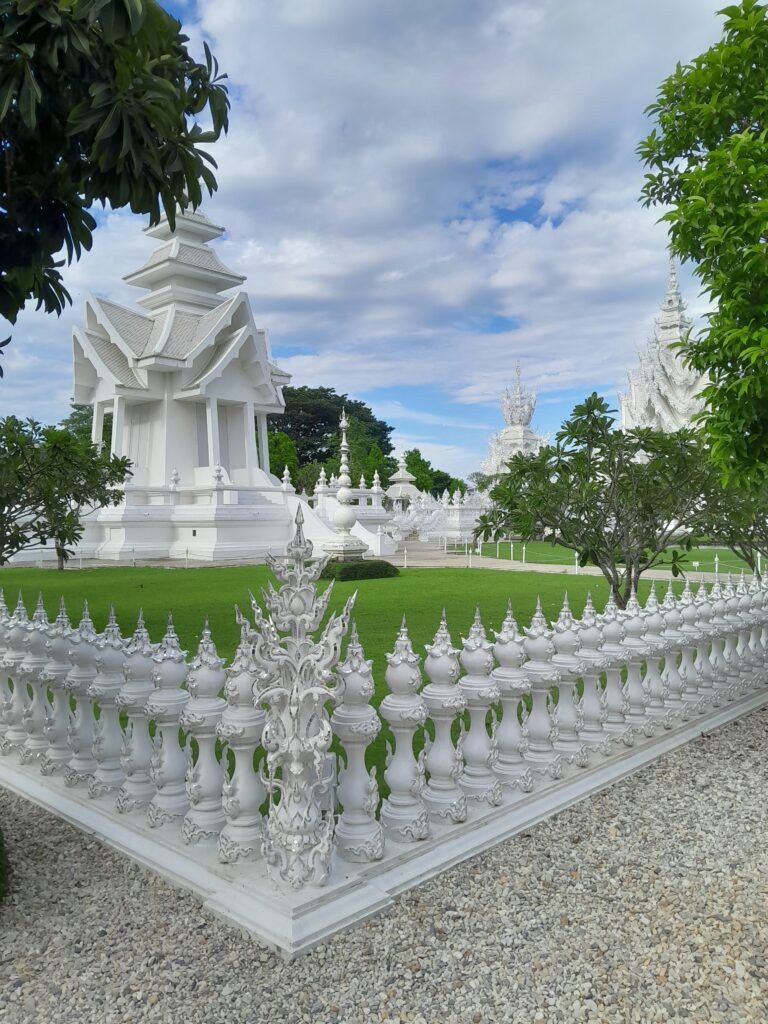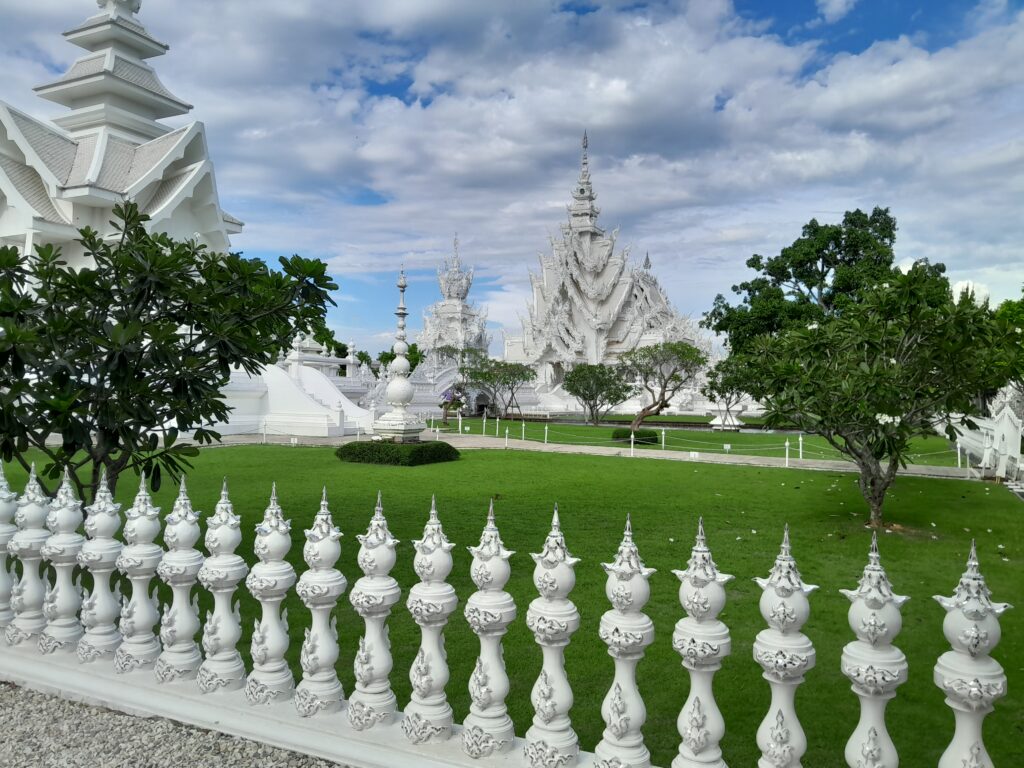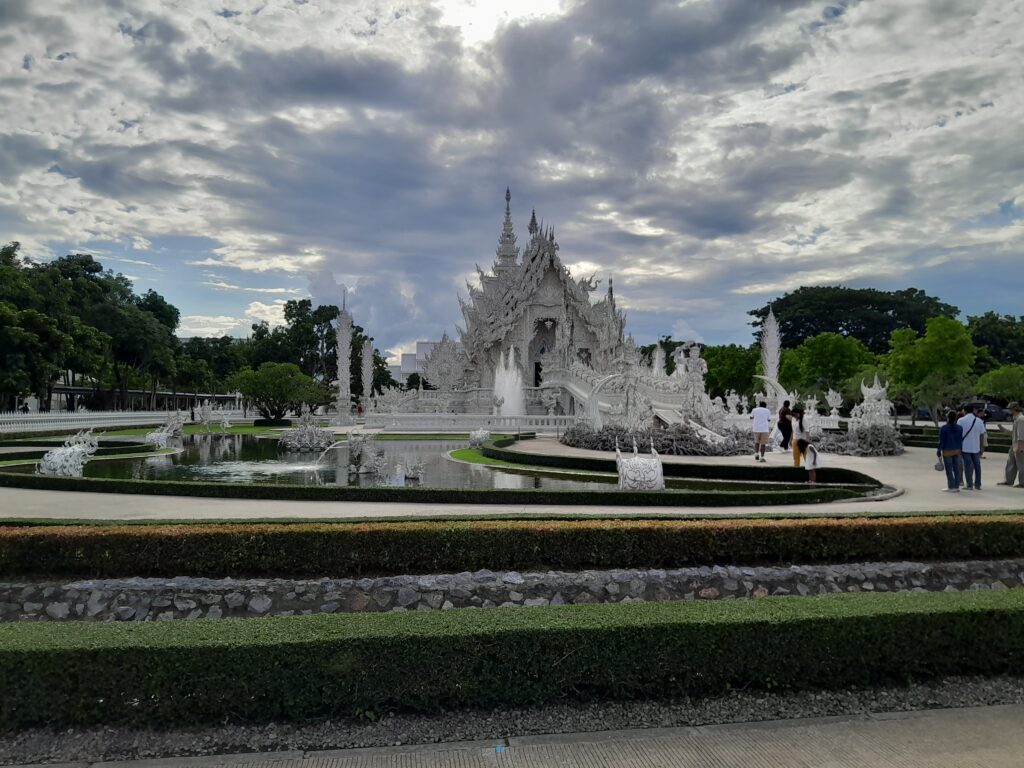Wat Rong Khun is a Buddhist temple that is known for its architectural marvel. With the appearance of porcelain, this temple holds much detail in its intricate structure. It is located in the south of Chiang Rai, close to the Thai-Laos border. We were passing through on our way out of the country so decided to spend a day visiting this unique temple.
There and Back Again
To get to Wat Rong Khun you can take a bus from Chiang Rai. Either from the bus terminal or on the main road running through the city. Chiang Rai is small so it isn’t too hard to find the right bus. It takes around 20 minutes, but won’t drop you right at the entrance – you’ll still need to cross the main road to get to the temple itself.
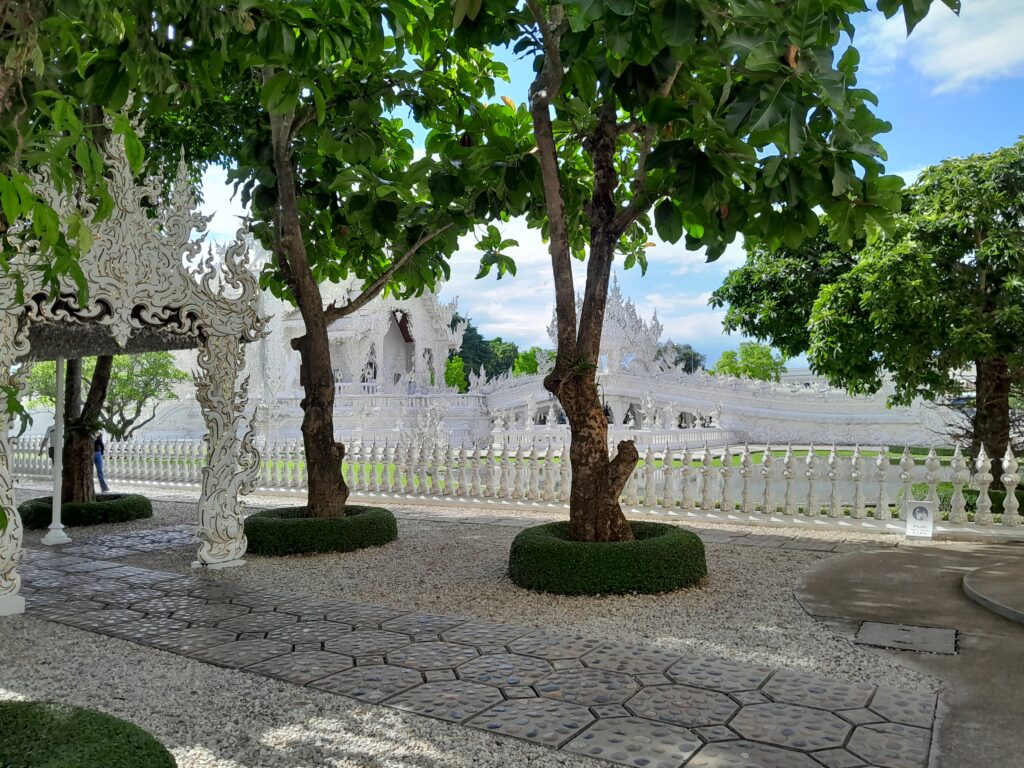
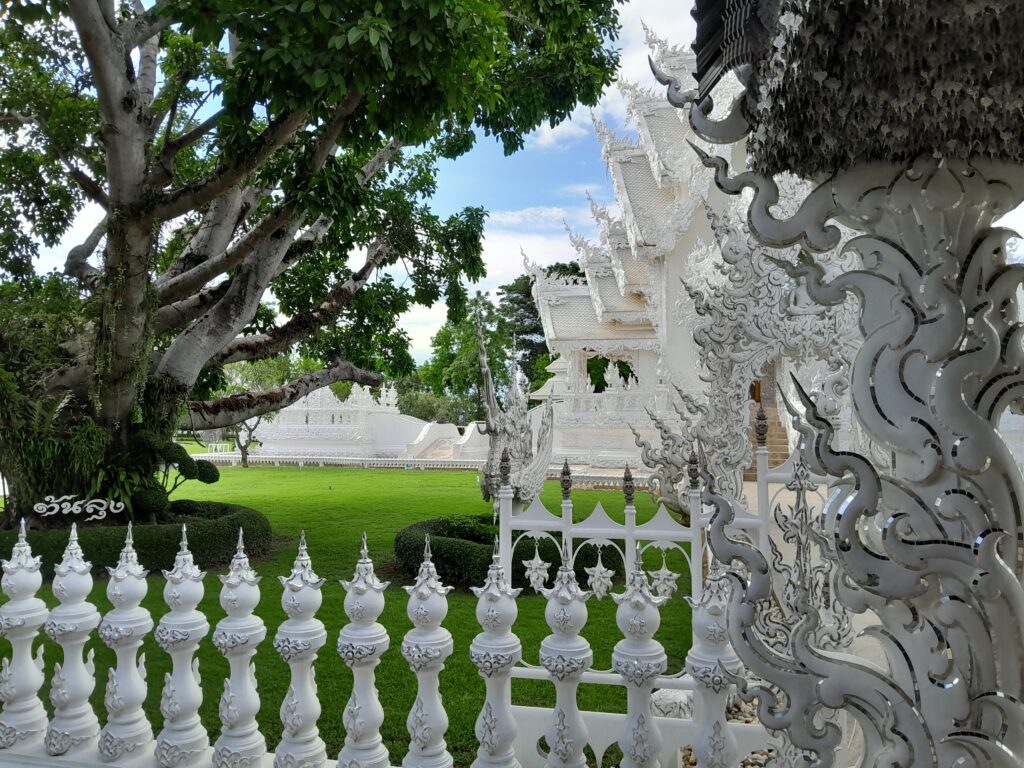

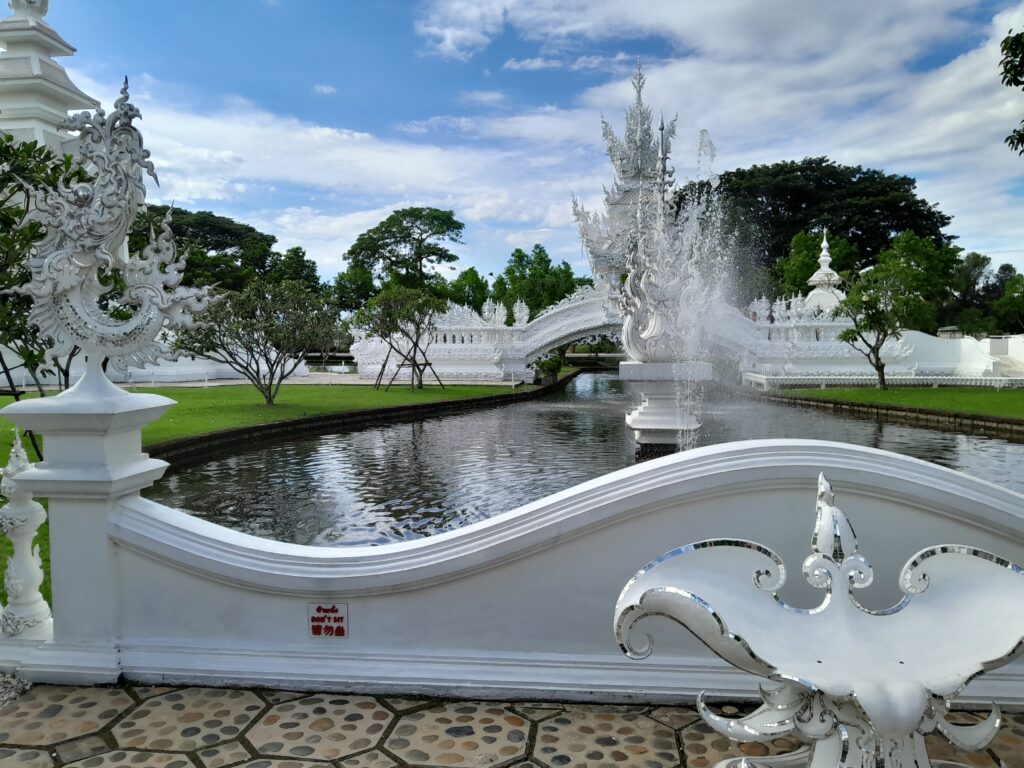

Getting a bus back to Chiang Rai proved to be impossible. We did finish fairly late in the day, but there were a couple of buses still scheduled. Despite this, we waited at the bus stop too long before giving up and grabbing a taxi back into town.
White Temple
On our short walk from the bus stop to the temple we walked past a rows of caged roosters. Walking past them was eerie, a sharp contrast to the spiritual calm we anticipated at Wat Rong Khun. Were they fighting cocks or kept for some other purpose? It left us wondering about local customs we’d barely scratched the surface of.
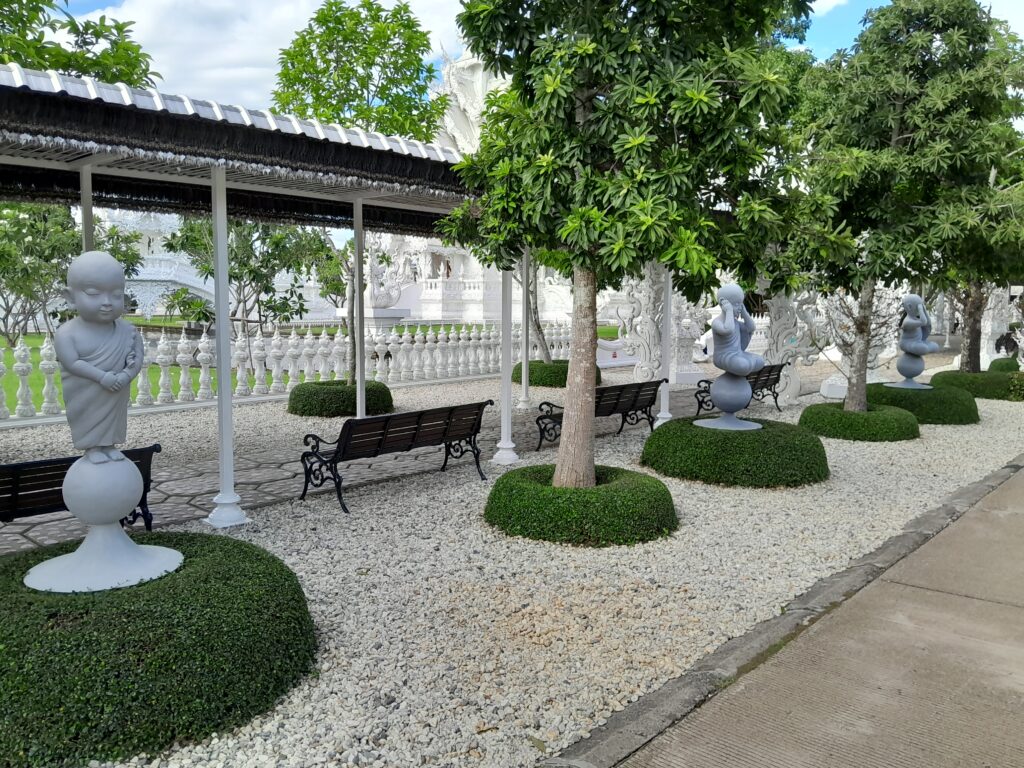
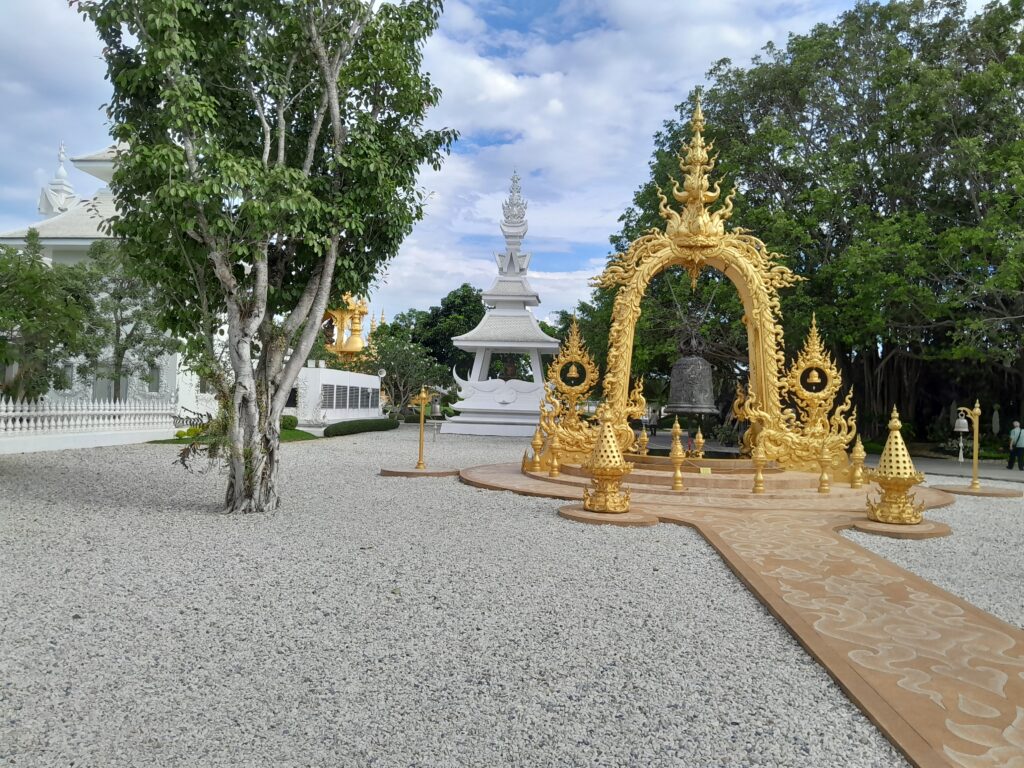
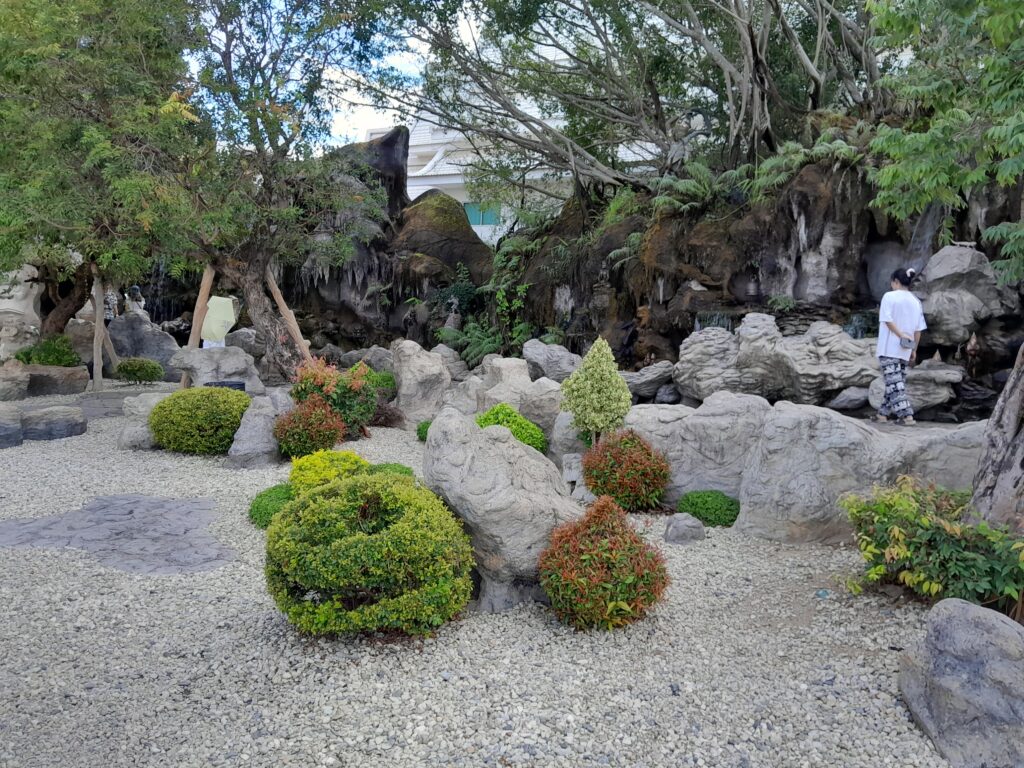
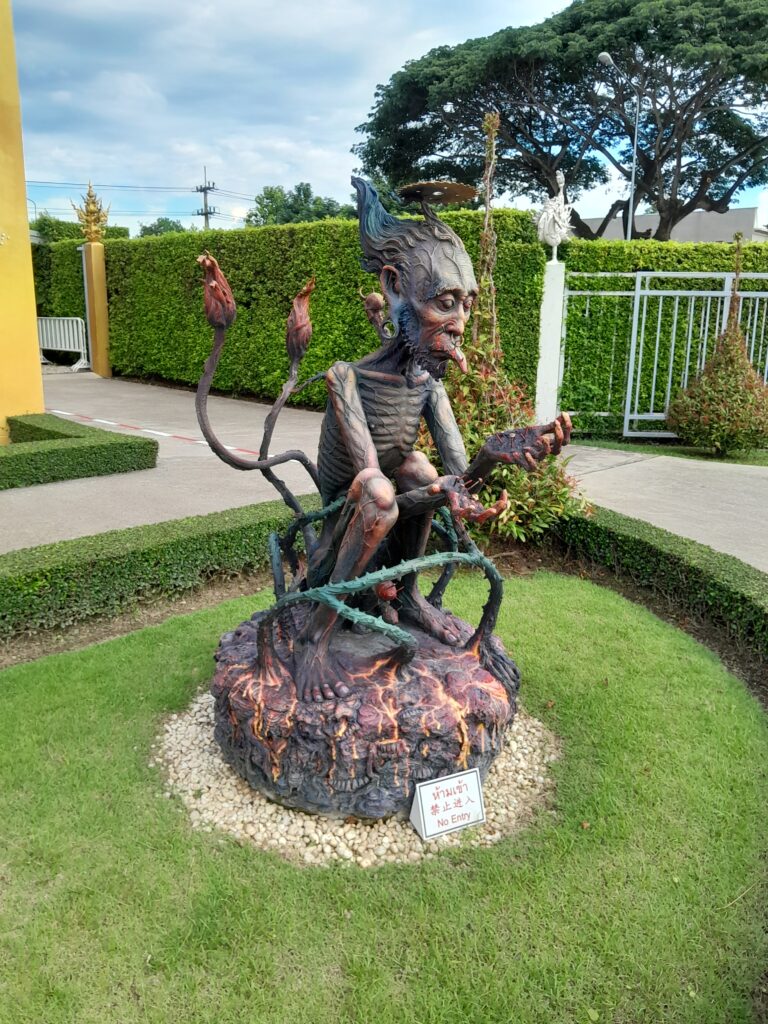
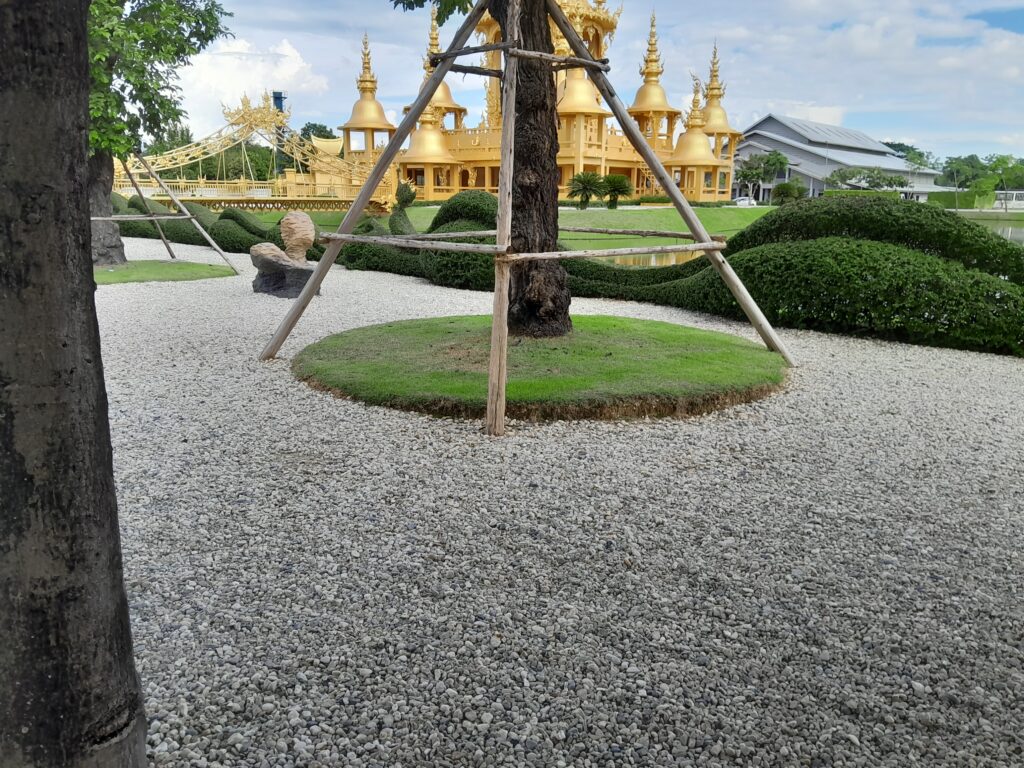
Admission to the temple grounds was 100 baht when we were there, while Thai citizens entered for free. You have to pay extra if you want to go inside the White Temple which is inside the temple grounds. You will also find a few other optional places you can visit, for an extra fee of course. It isn’t quite the same level of micro-transactions you’ll find in a Chinese temple, but it’s there.
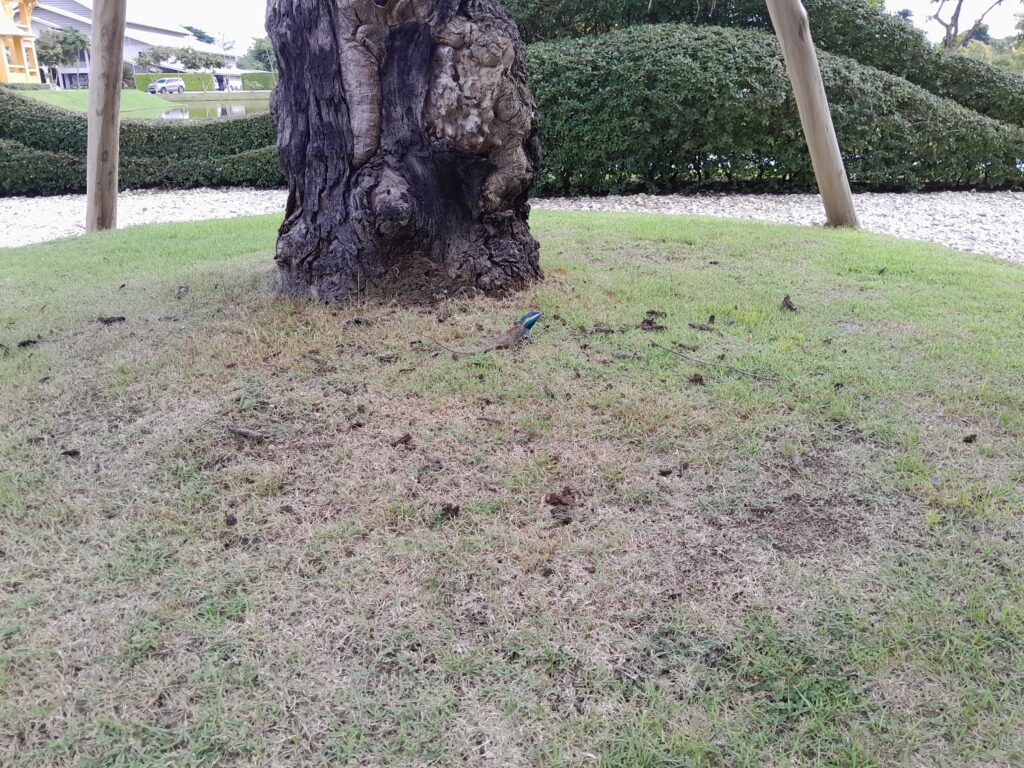
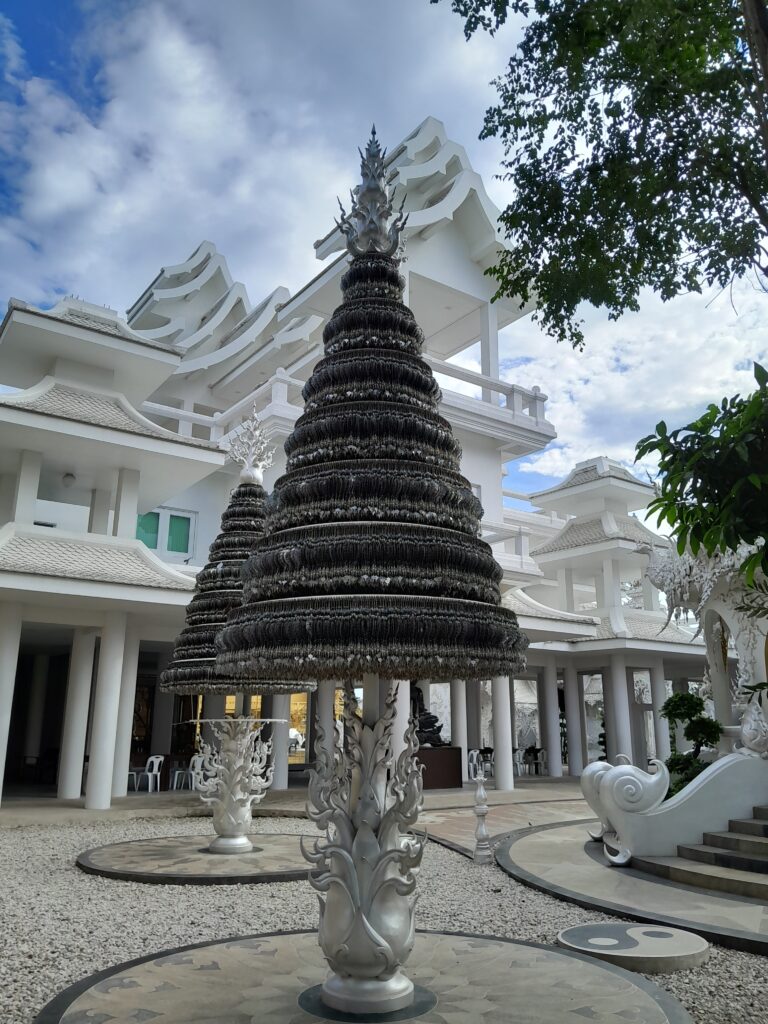
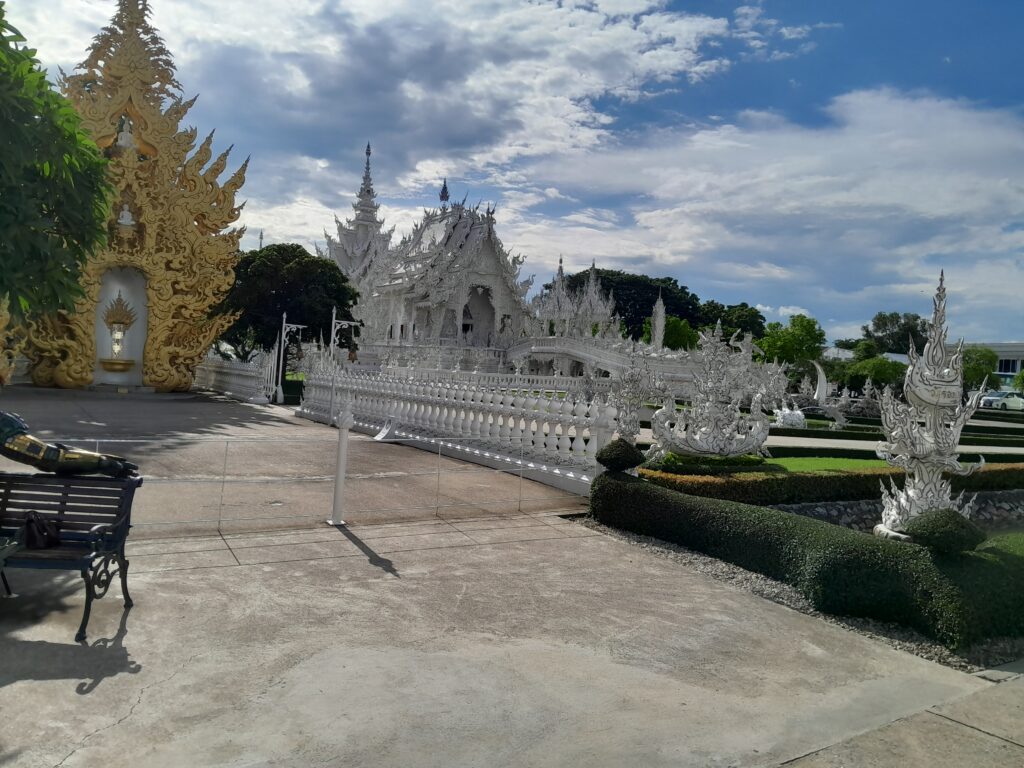
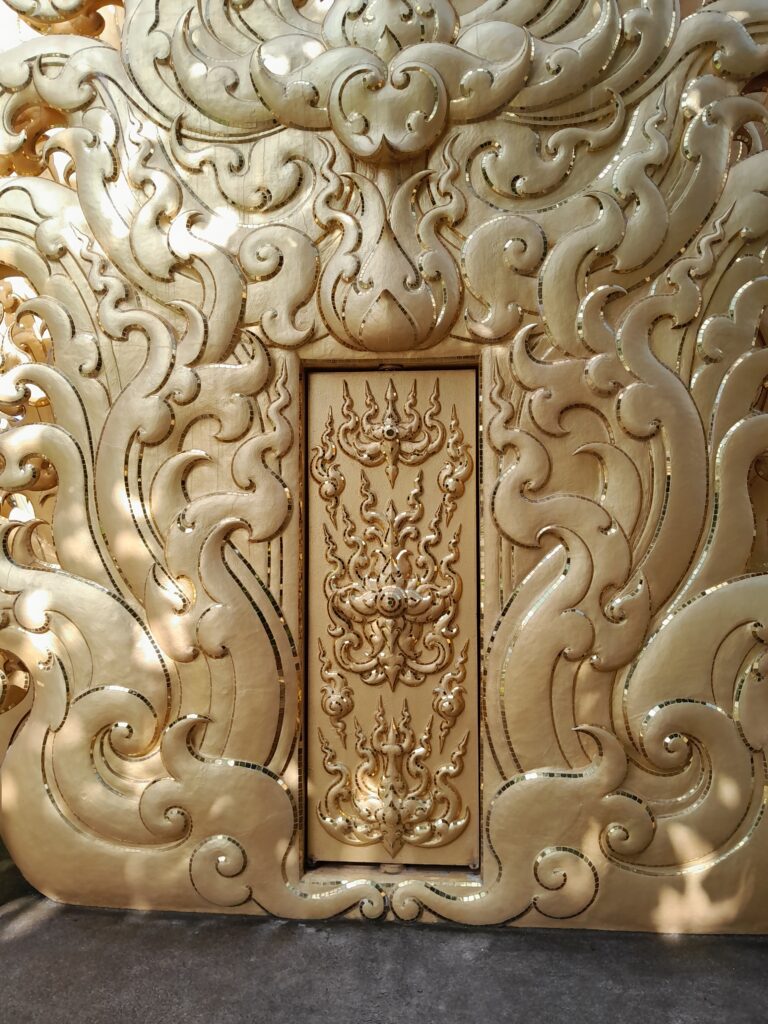
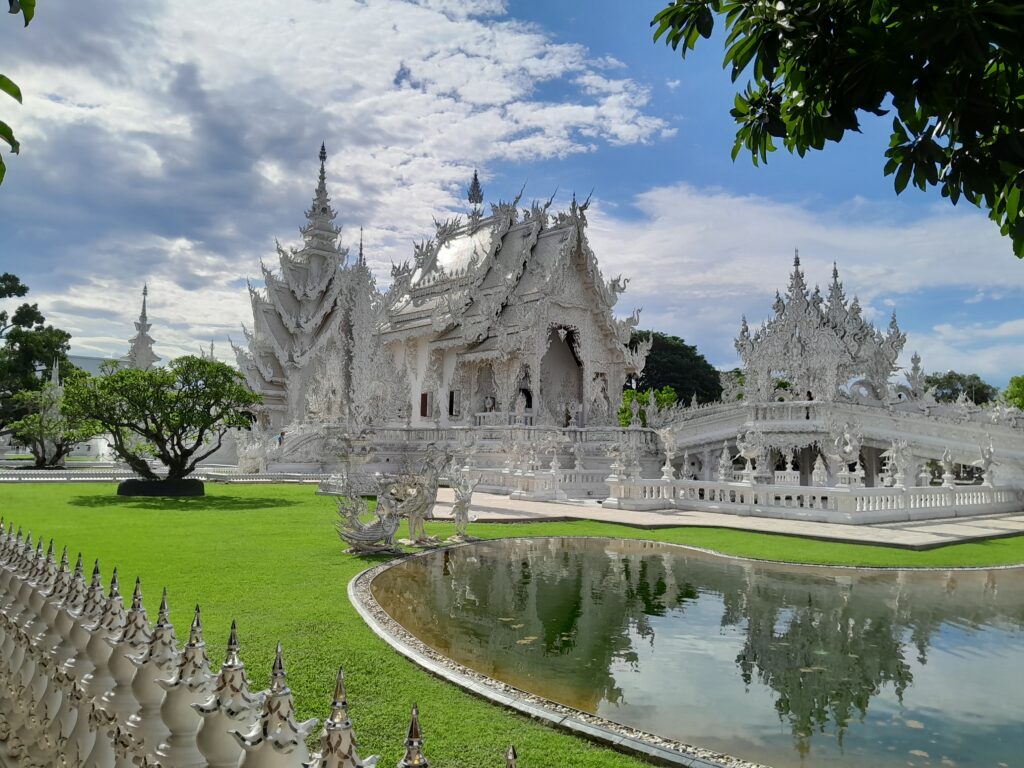
Even if you don’t want to pay extra, it’s still worth the visit. It isn’t actually made from porcelain but you’d be hard pressed to believe it isn’t. They use white wash, mirrors, and glass to achieve the look. Every inch of this temple oozes detail, from intricate spikes, curved bridges, seats shaped like leaves, layered roofs, ornate buddhas, and images of Ghanesh (the elephant god).
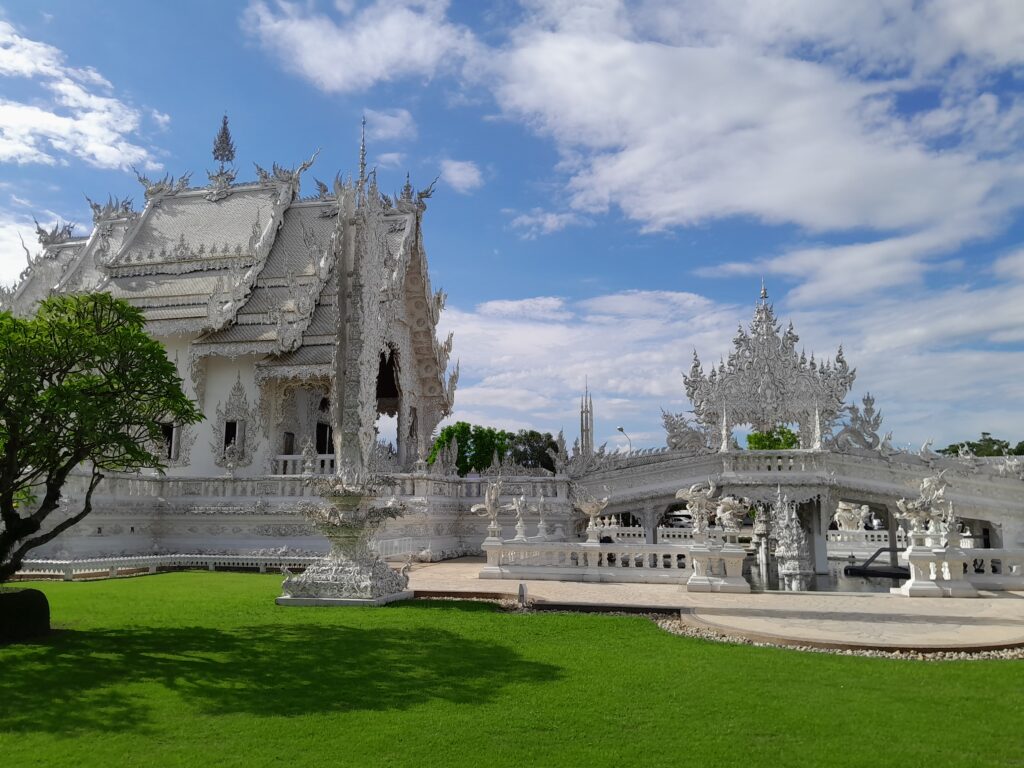
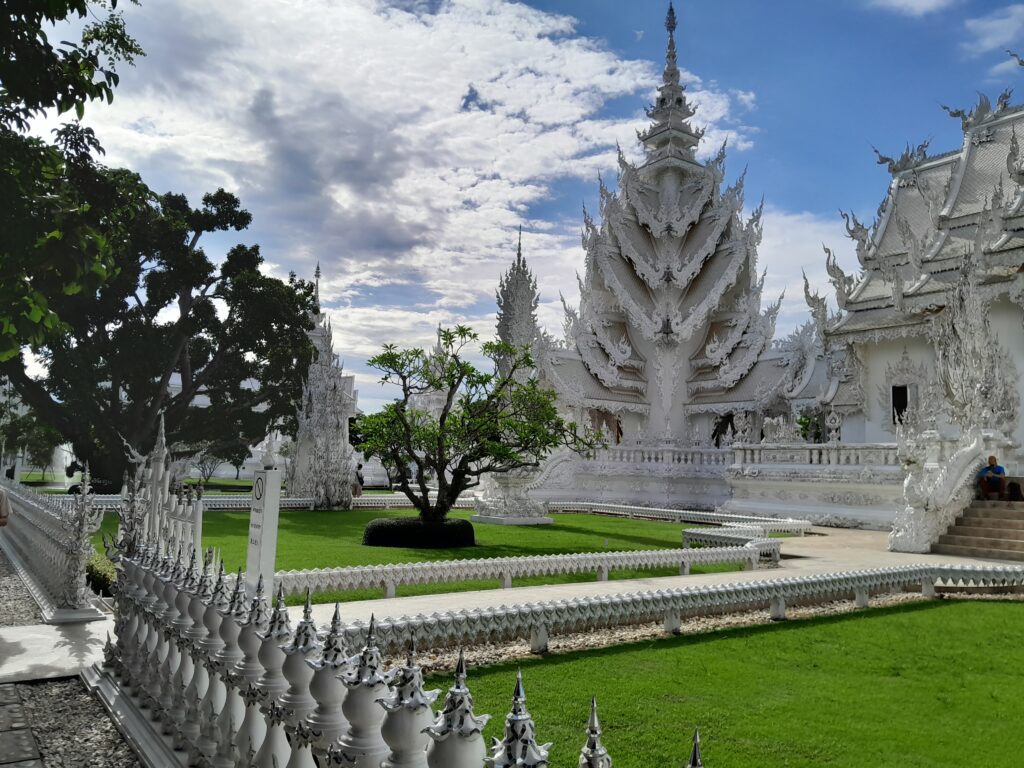
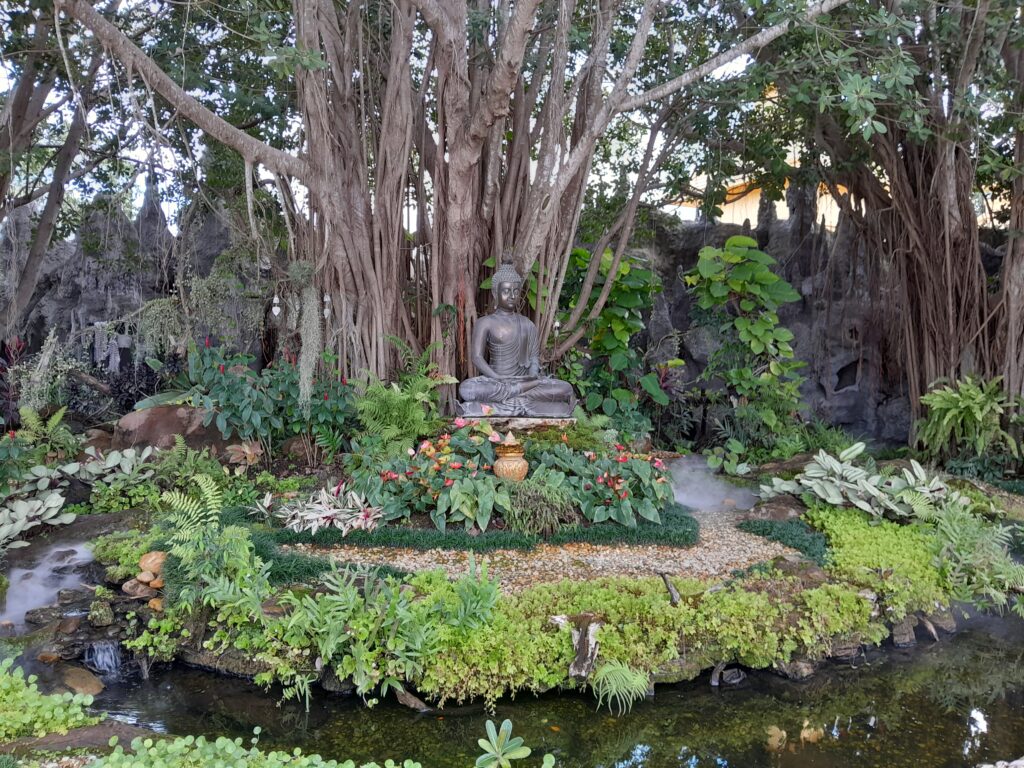
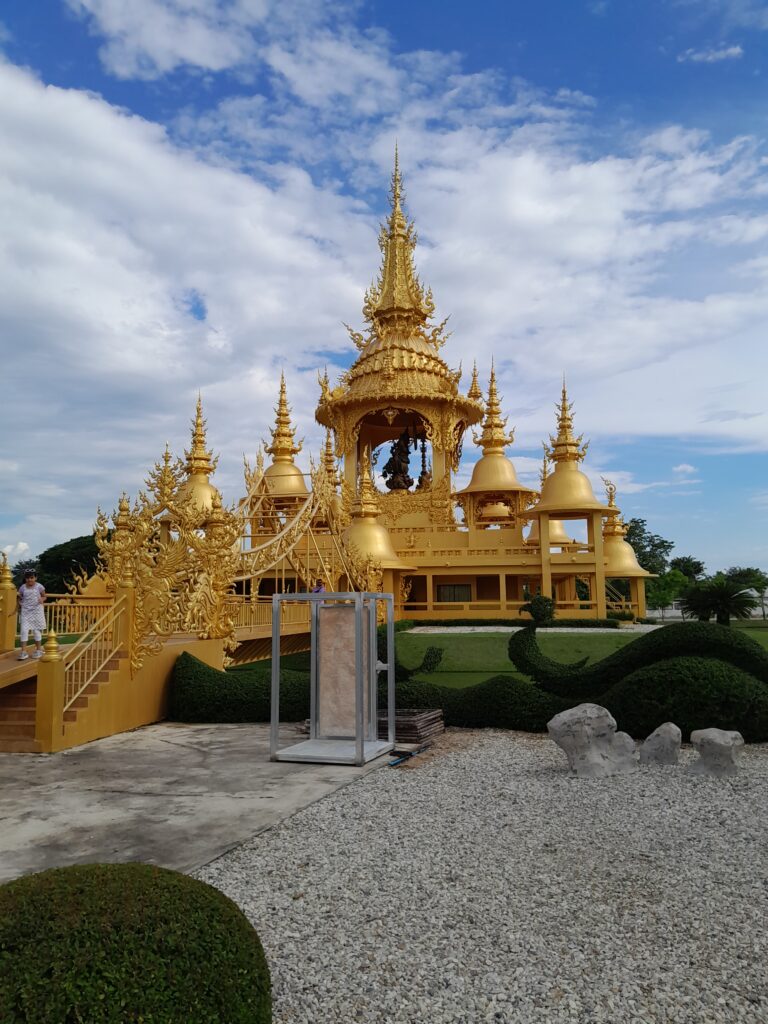
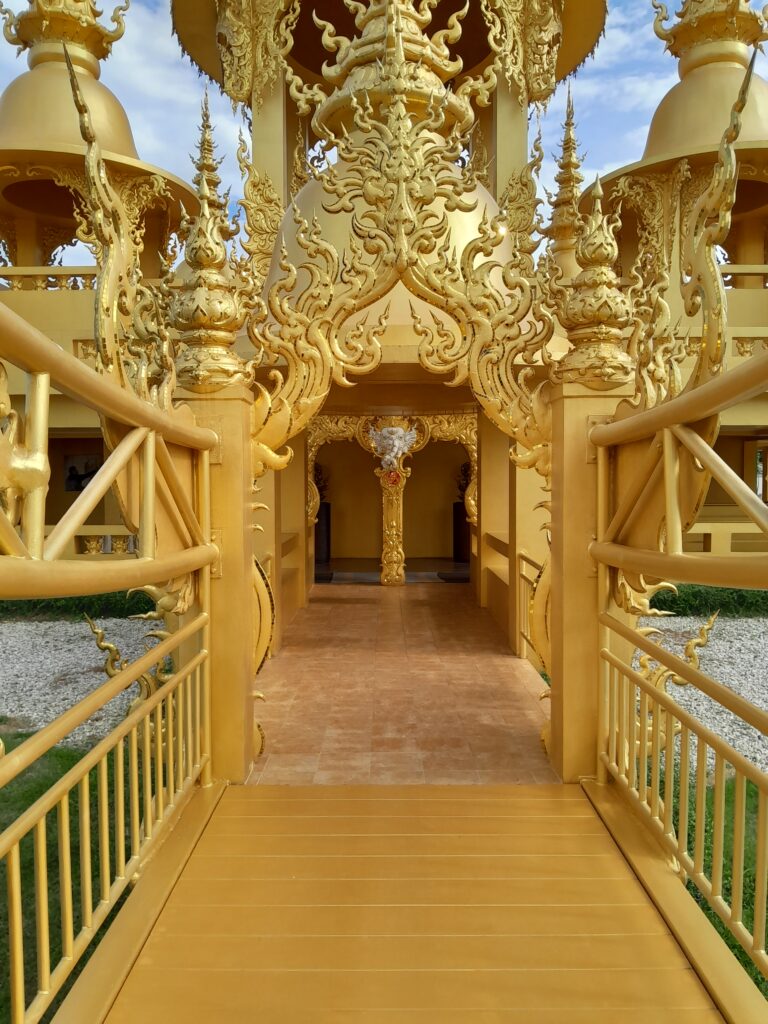
Each facet of the temple, every mosaic, catches the sun and make the temple seem like something not of this world. The pure white facade evokes a land beyond the living, as if it were made from bleached bone. This is appropriate as the temple is meant to represent the mind, and a focus on the pursuit of knowledge and spiritual needs – useful for those that seek enlightenment beyond death.
Exploring the Temple Grounds
Within the temple grounds there is also a gold temple. As intricately detailed as the white temple, this temple is said to represent the body rather than the mind. Gold is usually meant to represent spiritual awakening in Buddhism, but here it is meant to have a more literal meaning, symbolising people’s focus on worldly desires and especially money. It is the yin to the other’s yang.
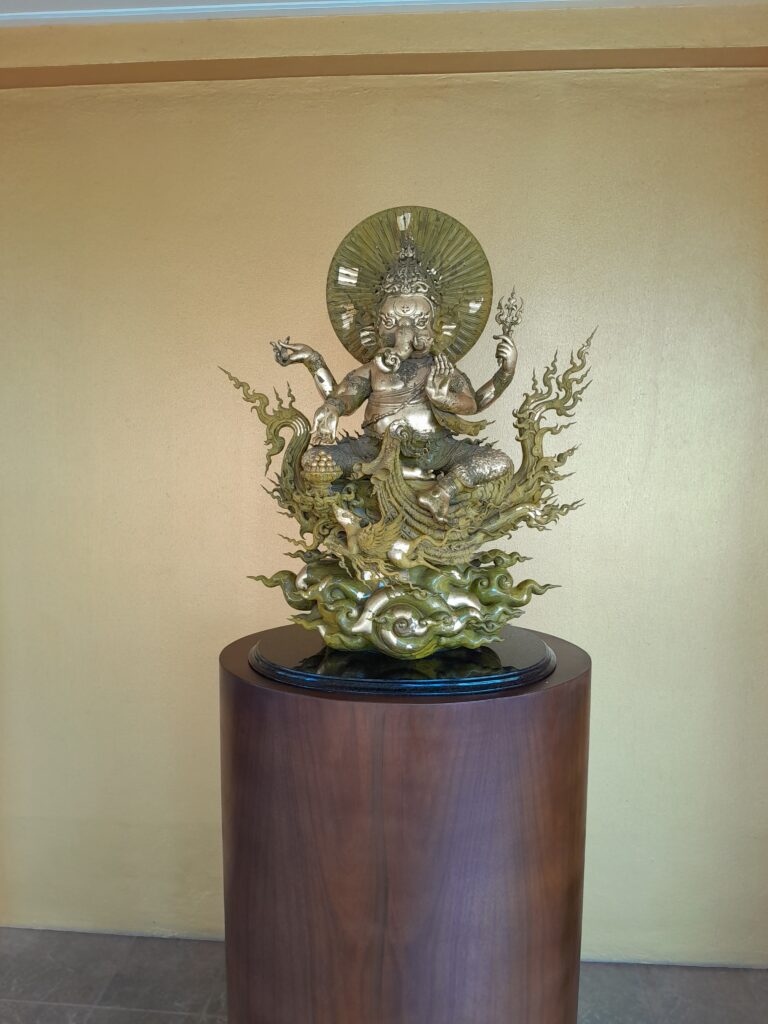
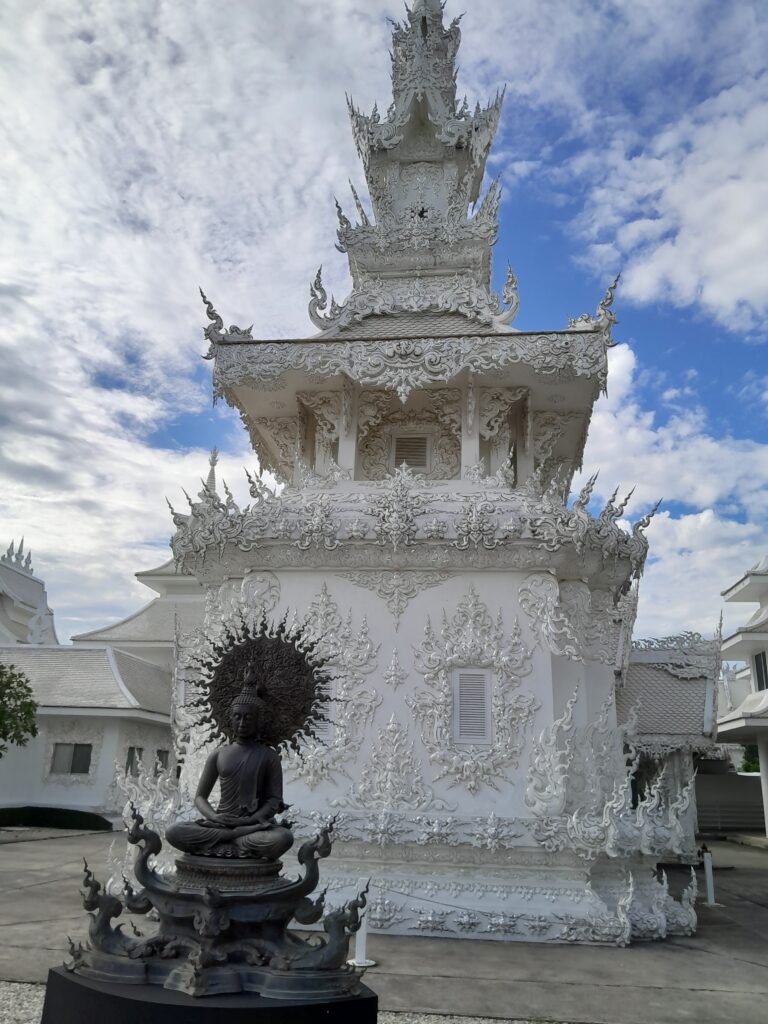
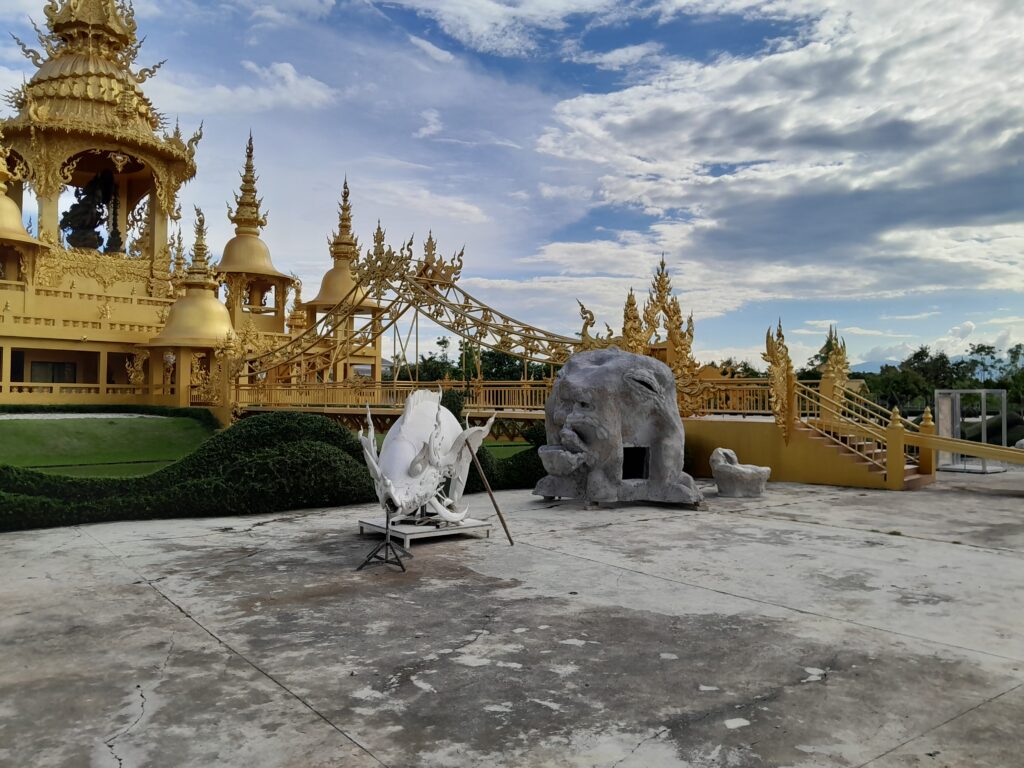
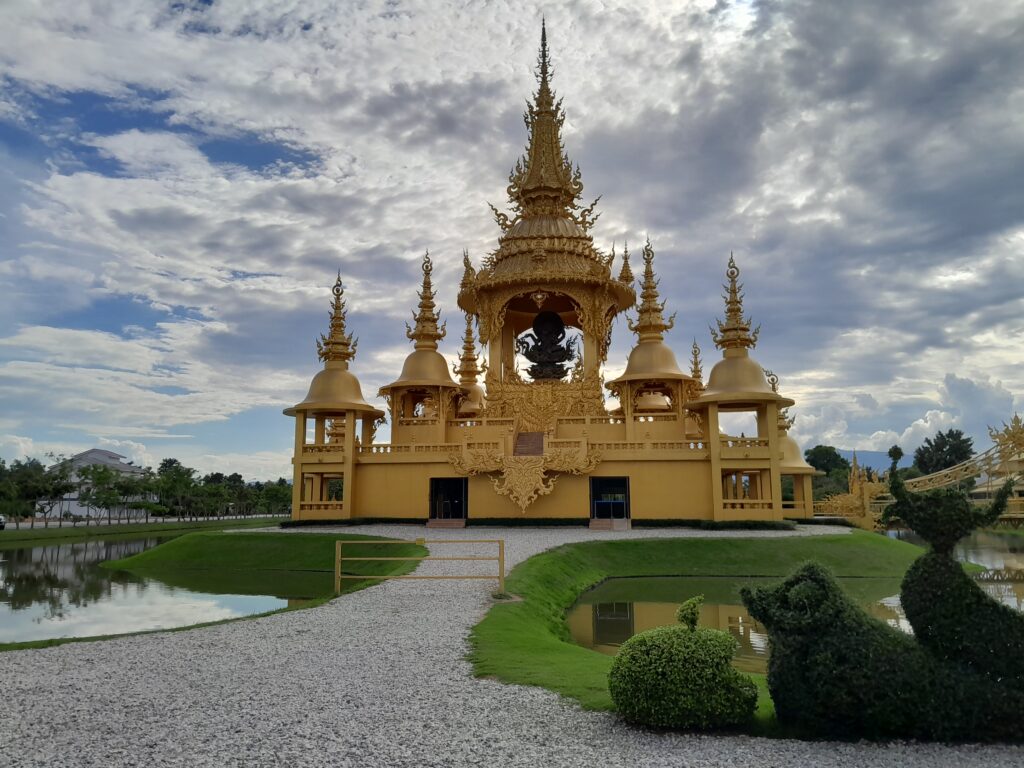
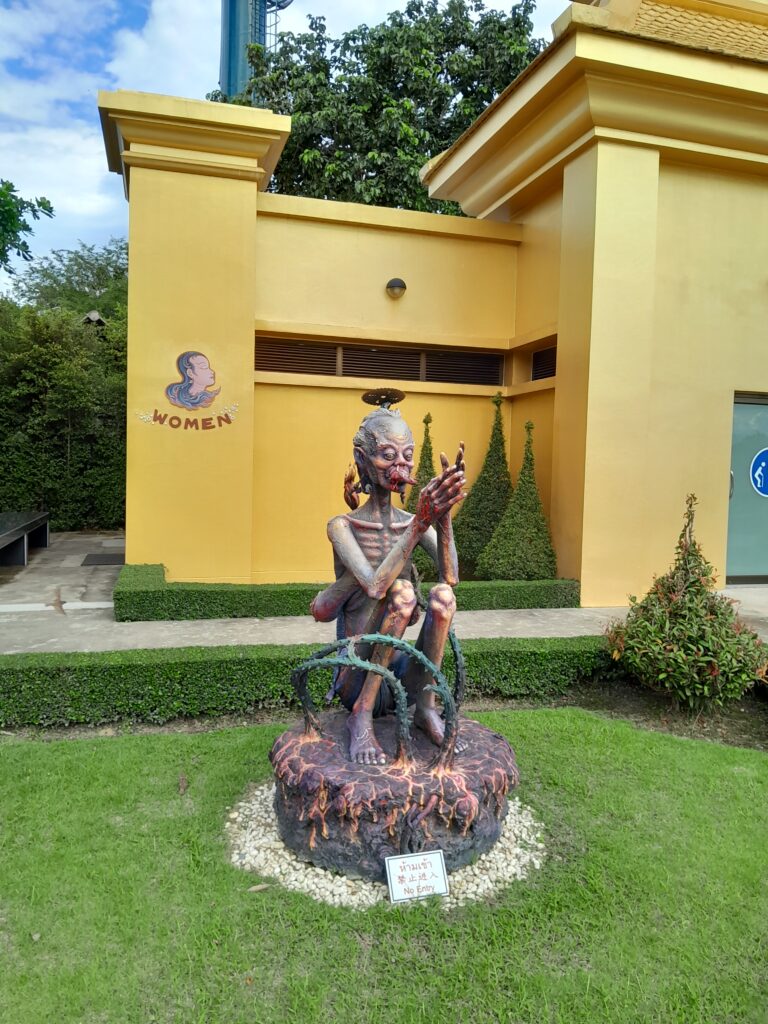
The gardens are also worth a short walk – you may spot a lizard or two. Around the back of the temple are two art galleries. These are free to enter, but no photography is allowed inside. Here you will find art inspired by both the temple itself, and the Buddhist faith. It’s an insight into how the local religion has inspired art.
Leaving
As we left the temple, the white spires glittering in the sunset, I felt an odd sense of contentment. Wat Rong Khun’s beauty is undeniable, yet it’s more than a stunning work of art. It’s a place where the lines seem to blur between physical and spiritual, between the living world and beyond.


